WORLD CLASS COACHING
Defend Like the Pro's
By Luca Bertolini
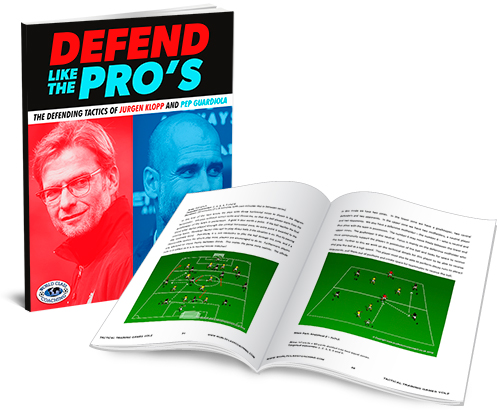
Table of Contents
PART TWO
Second Game Analysis
Second Game Analysis
In the second leg, Pep Guardiola set his team up in their usual 1-4-3-3 basic formation, with Fernandinho as the deepest of three central midfielders and Leroy Sane and Raheem Sterling providing attacking width.
Americ Laporte played as pushing up left fullback, helping the overload of Sanè side, and Danilo on the right completed the line of three at the back when City was in possession. Stones and Kompany acted as blocked center backs.
Liverpool tried to force the direction of opposition possession toward the right side, to prevent City from exploiting the left one.
As Roberto Firmino permanently blocked the passes lanes toward Fernandinho...
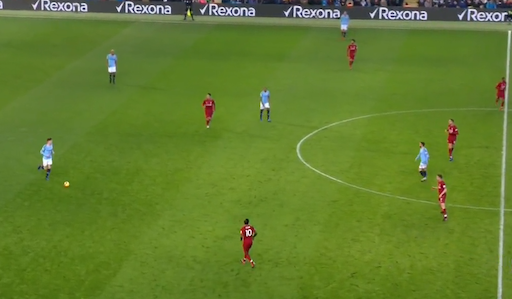
...Bernardo Silva dropped back to support the teammate shaping a 4-2-3-1 practically.
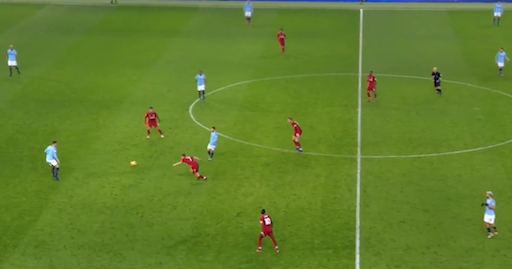
Out of possession and when not pressing high on the field, City utilized the same 1-4-2-3-1 structure.
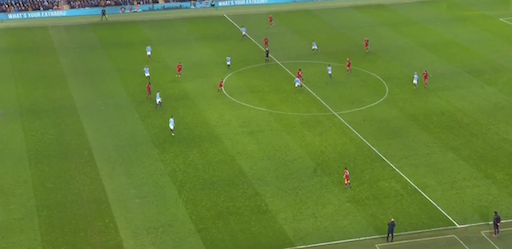
City didn't lose the usual high-pressure characteristics, aggressively pressing Liverpool’s back line and Lovren, when in possession, more than the other center back Van Dijk. They looked at him as the weak factor of the opposition, while building up from the back, because of his lower technical level and because of City trends to overload the left side, which took them to prefer to win the ball back along Laporte and Sanè side.
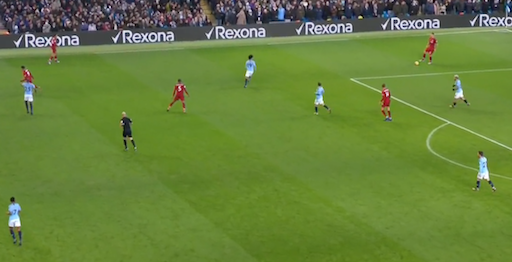
In this further example, the direction of play was forced toward Lovren again; Aguero was covering the passing toward Allison, David Silva was along the pass lane toward Van Dijk, Bernardo Silva and Sanè were ready to press Lovren on the right side of Liverpool first third.
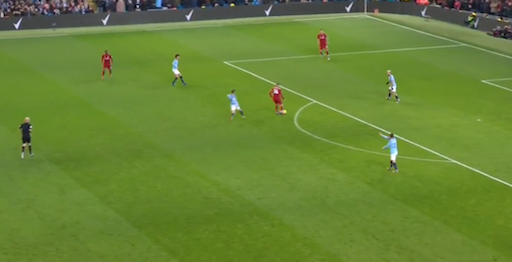
Sterling vs. Robertson...
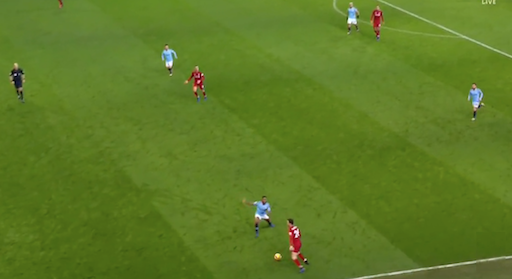
...and Sane vs. Arnold, the wingers locked on to their respective fullbacks...
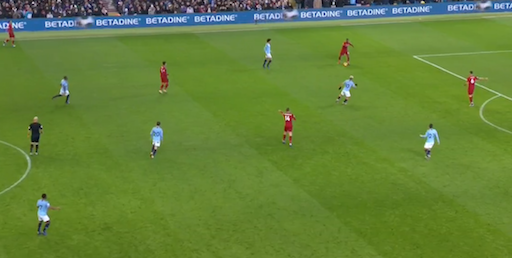
...and Aguero often was placed near Virgil Van Dijk position to left Dejan Lovren, whose distribution was inconsistent throughout, as Liverpool’s free man in the back line, before pressing him, when in possession. The same situation we already saw before.
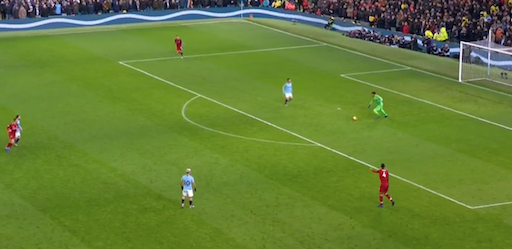
As it was done in the first leg, Manchester City’s first third defense was planned to be narrow and close lines, as back four and midfield lines were very compact, countering the overload of the center final third planned by Liverpool and preventing the opposition forwards from dropping deep; the only conceded movements were to drop back, as Manè was doing in this example.
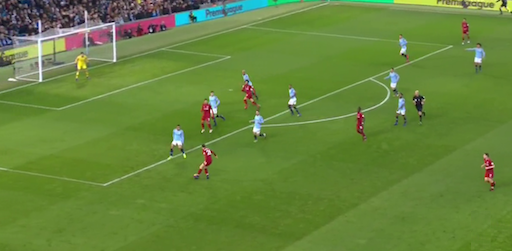
Many deep playing attempts were easily covered and the receiver was then double marked, as Salah against Stone and Fernandinho in this picture.
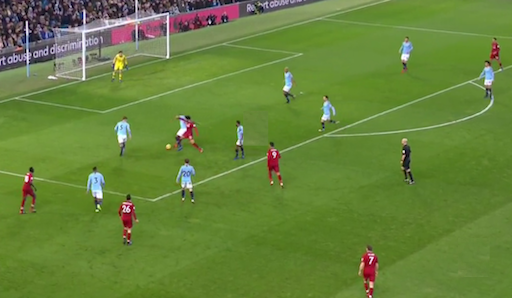
Without the ball, Liverpool utilized a 1-4-3-3 in the first half, which was shifted into a 1-4-2-3-1, when Fabinho was included into the 11 on the field in the second half.
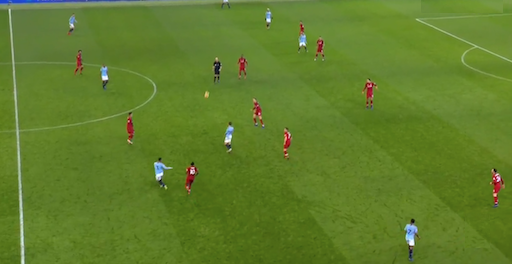
The mid-block of 6 players didn't press high the opposition, giving City the time to build up; some tactical pattern can be recognized anyway. Salah blocked off the passing lane toward Laporte side, trying to avoid the beginning of the overload of that side and again it's possible to see Firmino covering the passing lanes toward Fernandinho.
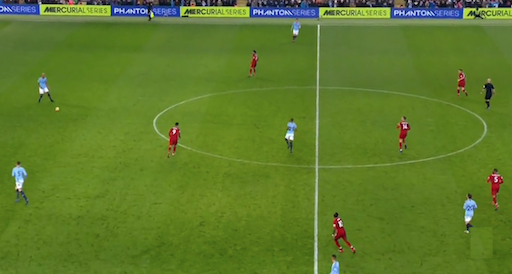
Stones, Bernardo Silva and Fernandinho were much more pressed than Kompany, as Liverpool clearly wanted the Belgian centre-back to distribute the ball into midfield. Liverpool tactical ideas seemed to be forcing the direction of building up phase toward the overload left side of Manchester City, to avoid any changes of play toward this side from the right and to avoid making this part a weak side of defense space.
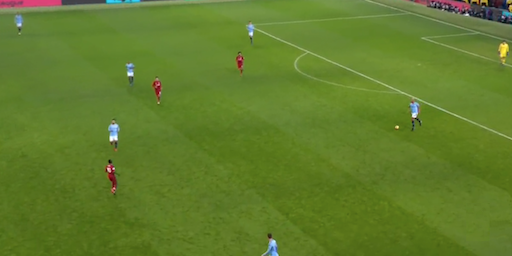
Leroy Sanè was too tightly marked to make the most of forward passes,
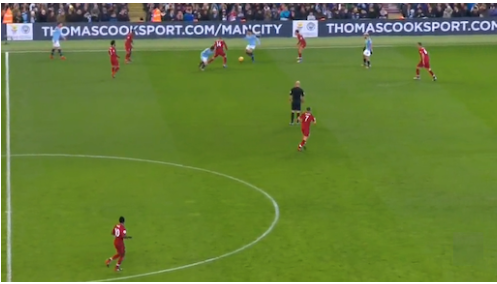
while the tireless work of Liverpool’s central midfielders ensured progress of the opposition move was limited, if Laporte or even David Silva received the ball.
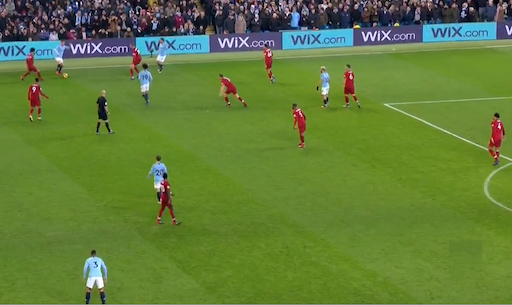
The overload of attacking left side that was plotted by Manchester City made Liverpool’s defensive unit slightly shifted to their right. This pattern of play naturally increased the space on Liverpool’s left, where former Red Raheem Sterling maintained full width.
To stretch Liverpool back line was one the attacking objectives of wide wingers, but City rarely took advantage of the switch from the left side toward the right one...
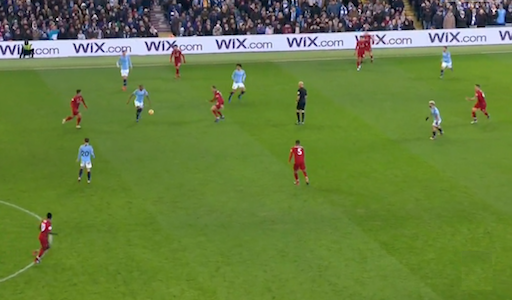
...where Andy Robertson would have had to deal with Sterling, defending an enlarged space.
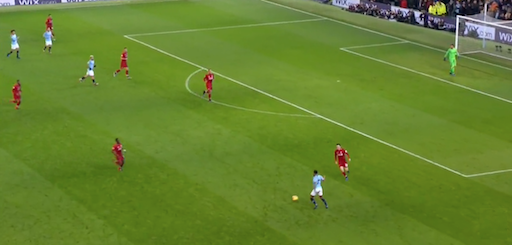
The heat maps of the defending/balance players of Liverpool are very important; the overload of the attacking left side of Manchester City can be understood by the red zones on the right defending side of Liverpool, where the midfielders had to shift across to counter the opposition.
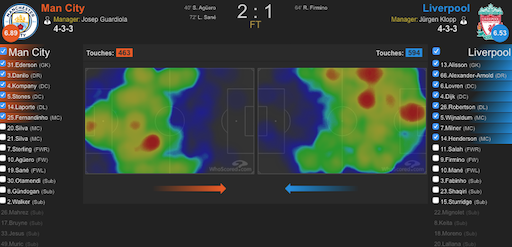
Looking at the heat map without Liverpool midfielders and without City's Fernandinho, we can realize how the Brazilian had to balance the left overload on the right side (red zone up here) and how the midfield block of Liverpool was compact and narrow, shifting all over the field's width.
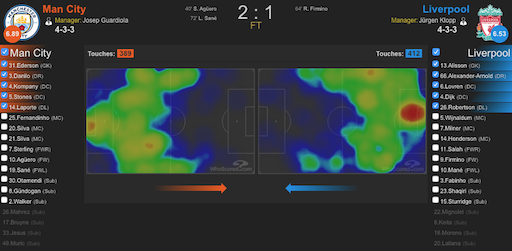
It's also very clear that Liverpool had to defend the depth on the center right and Man City concentrated the back four inside the center first third to counter the front three of Liverpool. The Citizens' wingers tracked back the opposition fullbacks to allow Laporte and Danilo to help the center backs.


